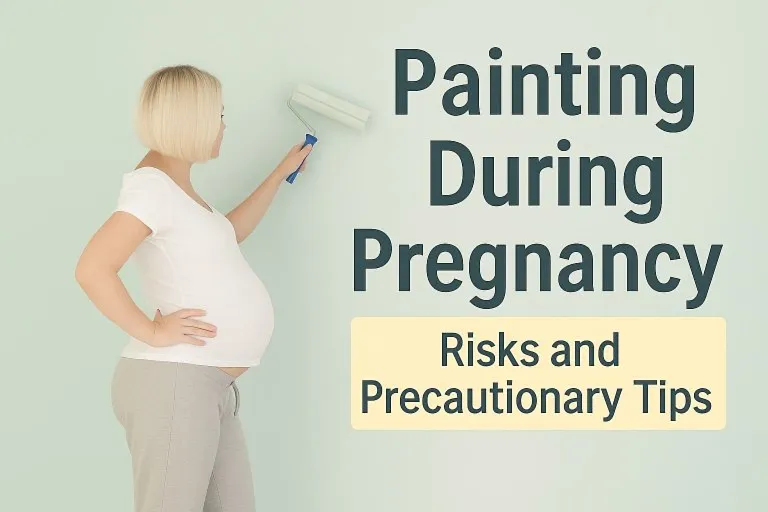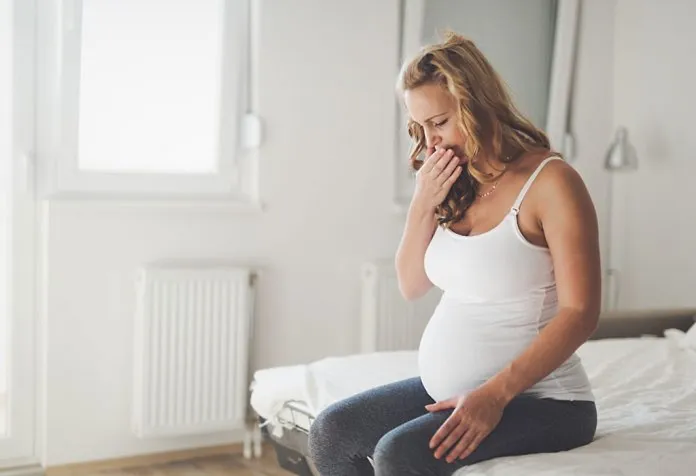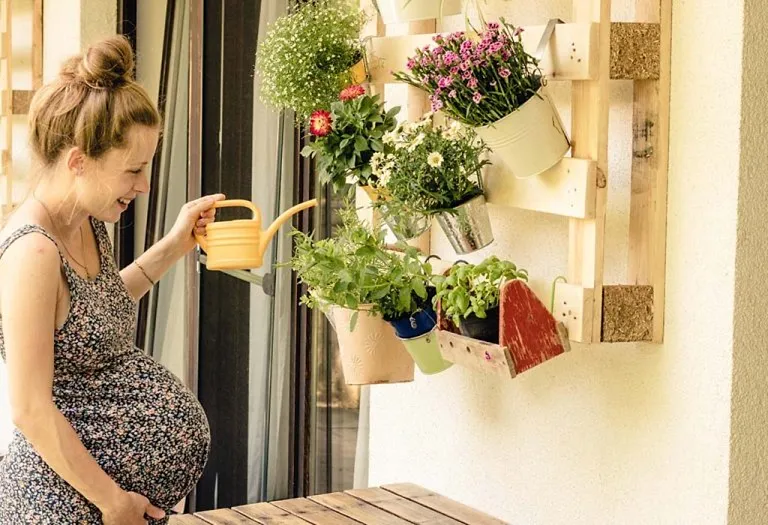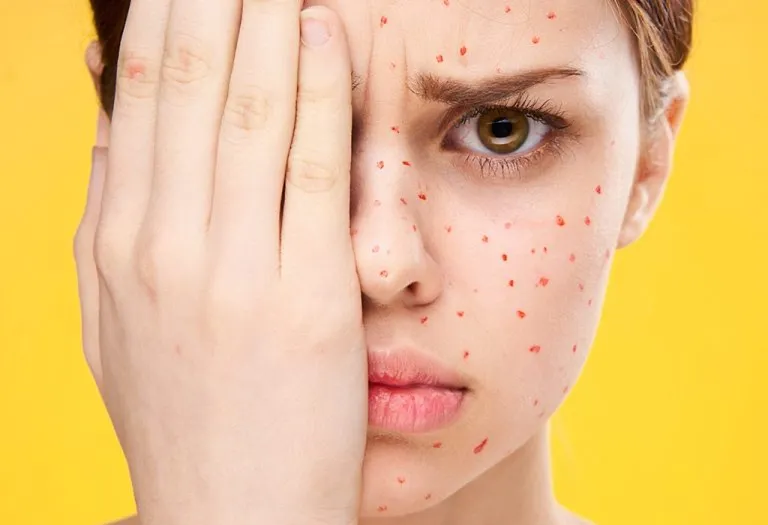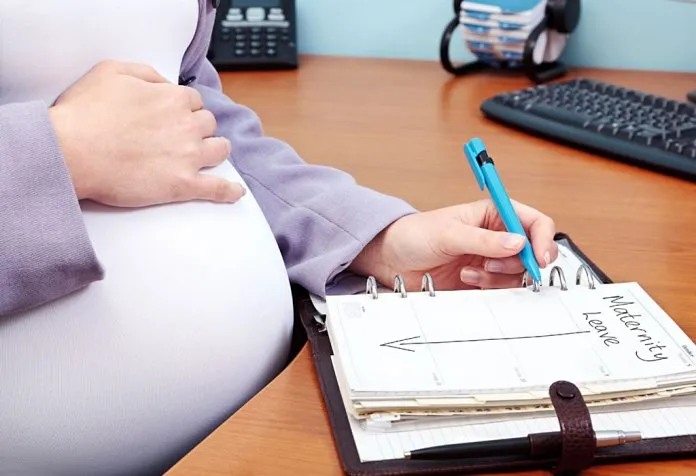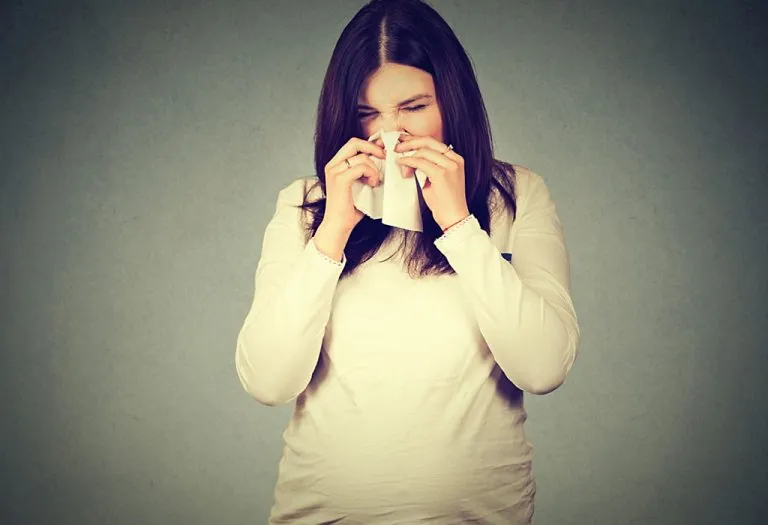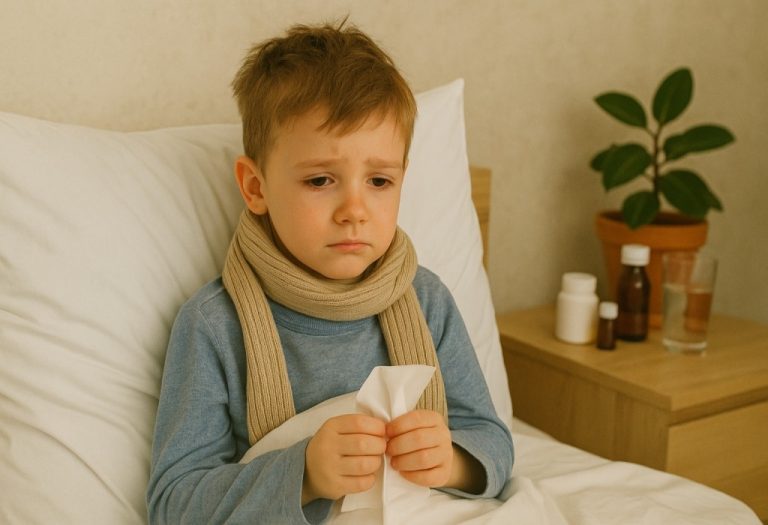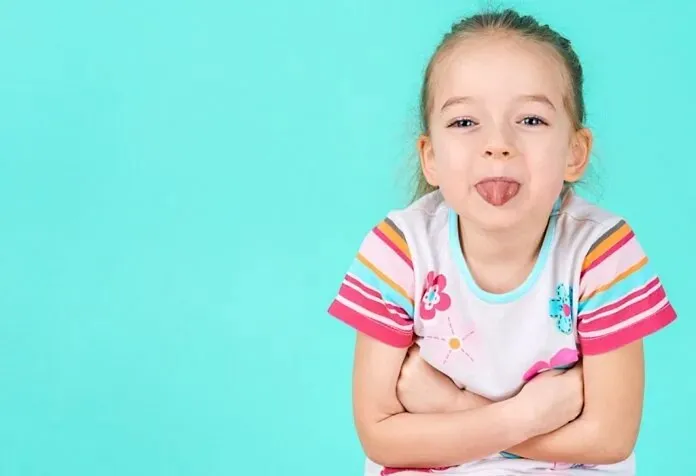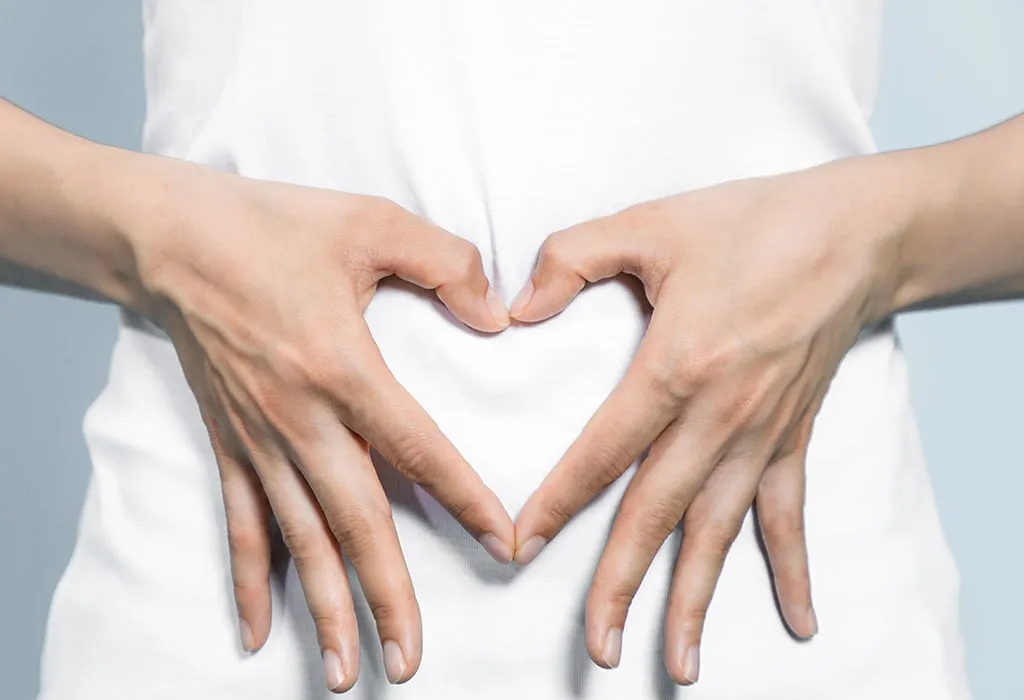Painting During Pregnancy – Risks and Precautionary Tips
Most parents would want to do all their nursery preparation by themselves, including painting walls or the whole place with colours they love. However, there remains the question of how safe it is for pregnant women to do so. As the vapour of solvents is harmful to the body, breathing in paint vapours is not good for anyone, let alone pregnant women. So, is it okay for pregnant women to be around paint? While there are differing opinions, painting during pregnancy is deemed to be risky and not worth considering the potential effects on the mother or the baby. However, there are some mom-safe paints that can be used. To know more about paint and pregnancy, continue reading to find out! In this article, we’ll discuss whether painting during the first, second, and third trimesters is safe.
Is It Okay to Paint While Pregnant?
The American Pregnancy Association states that there are primarily three types of paint that pregnant women might come into contact with: latex, oil, and enamel. Predicting the level of toxicity during pregnancy from the pain is difficult since there are no reliable methods to measure actual exposure (1).
The Tommy’s states that modern household paints pose a low risk to the unborn baby (2). However, the risk of paint toxicity is influenced by the specific chemicals and solvents present in the paint, as well as the extent of exposure. Most types of paints available in the market contain volatile compounds that can be harmful to the baby when the mother inhales the vapours. There aren’t many studies that show a safe level of exposure pregnant women can have to paint. Therefore, it is generally advised that pregnant women stay away from paints or other volatile chemical compounds (3).
Types of Paints That Are Safe and Unsafe in Pregnancy
Is the use of paint safe during pregnancy? Well, that depends on the type of paint used. The available types of paint in the market are as follows:
1. Oil Paint – Unsafe
Oil-based paints are the most harmful ones as they contain harsh solvents called volatile organic compounds (VOCs). The VOCs evaporate and cause headaches, eye irritation, dizziness, nausea, and fatigue when inhaled. Volatile compounds such as Toluene in the paint can affect the development of the fetus in pregnant women. It may result in birth defects similar to fetal alcohol syndrome.
2. Acrylic/Latex Paint
Acrylic and latex paints are water-based and relatively safer compared to oil paints. They can still contain tiny amounts of volatiles in the form of additives such as ethylene glycol or ethers that can be harmful.
3. Zero VOC Paints – Safe(r)
These days, many manufacturers produce paints that are marketed as zero-VOC. Since these have the lowest volatile compounds, they are considered the safest for children or pregnant women. If pregnant women strongly feel the need to paint their nurseries, these are the best, as long as adequate safety measures are followed.
However, the Environmental Protection Agency cautions that paints advertised as VOC-free could still release certain VOCs, making adequate ventilation essential (4).
4. Lead-based Paint – Unsafe
The American Pregnancy Association recommends avoiding exposure to oil-based paints, lead, and mercury. Exposure to latex paints containing ethylene glycol ethers and biocides should also be minimised. Or, just get the job done by someone else (1). Similarly, exposure to epoxies and resins should also be avoided during pregnancy as they elevate the risk of miscarriage, stillbirth, and birth defects (5).
5. Toulene – Unsafe
Paints containing the solvent toluene can have a negative impact on the pregnant woman’s health. Inhaling excessive amounts of toluene to get high during pregnancy can cause children to be born with birth defects.
Possible Risks of Painting During Pregnancy
The answer to the question “Can pregnant women paint?” depends on the risks they are exposed to due to the paints and the painting method. Here are some of the risks involved:
1. Exposure to Harmful Solvents
Different paints use a mixture of solvents designed to enhance the properties of the paint or improve its drying time. The solvents are known to increase the chances of birth defects in babies. A study shows an adverse relationship between pregnant women’s exposure to industrial solvents and babies born with gastroschisis (6).
2. Exposure to Lead
Although newer paints do not use lead, old paints from walls that may need to be stripped before applying a new coat could expose the pregnant woman to lead. Lead is known to increase the risk of a range of complications in pregnancy, such as miscarriage, impaired development of the nervous system, and decline of IQ and cognitive abilities.
Exposure to lead during fetal development negatively impacts neurodevelopment, with this effect being potentially most significant in the first trimester. This can be most effectively assessed by evaluating lead levels in either maternal plasma or whole blood (7).
3. Fumes From Oil-based Paint
There is a risk even from smelling paint while pregnant as oil-based paints give off fumes of spirits such as xylene, toluene, spirits, and other alkanes. It is advisable not to walk into a freshly painted room and keep the doors and windows open until all the odour is gone.
4. Spray Painting
The NHS suggests avoiding spray paint or solvent-based paint (8). The risk is highest with spray paints unless complete preventive measures, such as wearing a protective mask and suit, are taken. Spray paints work by turning paint into a fine colloidal mist that can be easily inhaled or settle on the skin. Off-the-shelf spray paints also contain a range of VOCs that are even more harmful than oil-based paints, as they are designed to evaporate and dry faster.
5. Exposure to Dust
Repainting a house requires extensive sanding and blasting operations that increase dust in the air, which is likely to settle on the skin or be inhaled. If the house is more than 30 years old, exposure to lead-based paint and other harmful chemicals from previous paints and surfaces is a risk.
When Should Pregnant Women Particularly Avoid Painting?
Expectant mothers are almost equally susceptible to risk from paints during all the trimesters. However, since the first trimester involves the most critical development processes, the fetus is most vulnerable to even small doses of inhaled solvents. Therefore, it’s best to outsource the painting and redecorating tasks.
A 2012 study published in the Environmental Health indicates that babies exposed to solvent-based paint during the first trimester may have congenital abnormalities in their renal and nervous systems (9).
Research from 2017 found that exposure to paint odours within the six months leading up to conception can affect a baby’s birth weight and increase the likelihood of macrosomia. However, it is essential to recognise that this is only one study (10).
Safety Precautions for Painting When Pregnant
Since a pregnant woman dealing with toxic paint fumes has more risks than a normal person, it is essential to take adequate precautions before starting. Precautions should be maintained even when entering a room with fresh paint. Inhaling or smelling the paint while pregnant is also potentially harmful to the baby. Here are some of the most important precautionary steps one can take:
1. Breathing protection
The most significant risk of painting comes from the inhaled solvent vapours given off by the paint. It is essential to wear a respirator approved by the National Institute for Occupational Safety and Health to avoid breathing in the chemicals. Respirators use special filters to scrub out the solvents, which ordinary dust masks cannot do.
2. Skin protection
It is essential to avoid direct contact with the chemicals in paint. Hence, pregnant women must fully cover themselves up while painting using protective gloves, face masks, long trousers, long-sleeved tops, and goggles (11). Using a disposable plastic worker’s suit can also protect against paint spills or splatter. Immediately wash any paint that comes in contact with the skin.
3. Keep the room well ventilated
The best way to clear out the vapours is to have good air circulation in the room. Keep all the doors and windows open while painting.
4. Be mindful of lead paint
If the house being repainted is more than 30 years old, when lead was commonly used in paints, it is ideal to have the old paint removed by professionals before starting the new coat of paint.
5. Do not eat or drink in the room
Avoid eating, drinking, or consuming other beverages in the room that is being painted. But remember to stay hydrated—just make sure to put your sealed water bottle in another non-exposed room.
6. Watch your step
As the pregnancy bump begins to show, women tend to lose their balance a lot more. Try not to use stools or ladders and instead get someone to paint the high surfaces.
7. Wash up well
After the painting session, take a good shower and avoid using solvents to remove paint that has stuck to the skin.
8. Use safe paints
To make it safer, use paints that are zero VOC.
Alternatives to Paint While Pregnant
Yes, you can build a beautiful no-paint nursery for your baby that will be just as pretty as one with paint on it. Here are some easy alternatives to avoiding paint during pregnancy:
- If you’d rather avoid painting during pregnancy, consider alternative decorating ideas, such as non-toxic wall decals, wallpaper, or removable wall coverings. These can give the same fresh look without the need for paint.
- You can also add second-hand furniture or décor pieces, as they’ve already aired out any fumes.
- If you decide to paint, be sure to use low-VOC or VOC-free options, follow all safety precautions, and consult with your healthcare provider first. Your well-being and your baby’s safety come before anything else.
- Add in colourful rugs, throw pillows, lamps, and animal or cartoon-themed curtains.
- Add a baby mobile in the room.
FAQs
1. What are the safest paints to use while pregnant?
Since several paints contain different kinds of solvents that can be detrimental to a pregnant woman and her unborn baby, it is ideal to use zero-VOC paints along with proper precautions, like wearing a safety suit and respirator.
2. Is it safe to sleep in a freshly painted room while pregnant?
If you’ve just finished painting a room with zero-VOC paint, it’s safest to wait about 24 to 48 hours before you or your baby sleeps there. This allows the paint time to cure and any remaining odour to dissipate. Adding a portable air purifier can also help clear out lingering odours.
3. Can exposure to pain increase the risk of miscarriage?
A miscarriage can occur in any pregnancy due to various reasons. Modern-day household paints, when handled with proper safety precautions, offer a low level of exposure and are unlikely to increase the risk of miscarriage (12).
4. Which redecorating projects should pregnant women avoid?
Pregnant women should avoid specific redecorating projects. In addition to avoiding oil-based and solvent-based paints, it’s best to refrain from stripping furniture while pregnant due to the chemicals involved. Furthermore, scraping or sanding any type of paint is not recommended because fine particles can become airborne and are more readily inhaled. Older paints often contain higher levels of toxic substances, which could cause severe harm when inhaled.
The most significant risk comes from scraping and sanding lead-based paint, which was commonly used prior to the 1970s (13). When you scrape lead paint, lead dust can be inhaled, posing potential harm to both you and your baby. It’s advisable to leave these tasks to professional decorators who can handle them while you are not at home.
Painting during pregnancy may be a bucket-list task, but it’s essential to follow up with experts to determine whether the toxins in the type of paint you are using are safe for your pregnancy and your baby. Look for paints that have low exposure backed by plenty of research, and if any confusion arises, consult with your doctor.
Also Read:
Cleaning in Pregnancy
Boating in Pregnancy
Jumping while Pregnant
Working during Pregnancy
Household Work during Pregnancy
Is Nail Polish Safe while Pregnant
Was This Article Helpful?
Parenting is a huge responsibility, for you as a caregiver, but also for us as a parenting content platform. We understand that and take our responsibility of creating credible content seriously. FirstCry Parenting articles are written and published only after extensive research using factually sound references to deliver quality content that is accurate, validated by experts, and completely reliable. To understand how we go about creating content that is credible, read our editorial policy here.
1. American Pregnancy Association – Painting While Pregnant
2. Tommy’s – Chemicals and air pollution in pregnancy
3. Pregnancy Birth and Baby – Things to avoid during pregnancy
4. EPA – Promoting Good Prenatal Health: Air Pollution and Pregnancy
5. CDC – About Epoxies and Resins and Reproductive Health
8. NHS – Health things you should know in pregnancy
11. NHS – Can paint fumes affect my unborn baby?
12. NIH – Paint
13. Environmental Protection Agency – Protect Your Family from Sources of Lead





